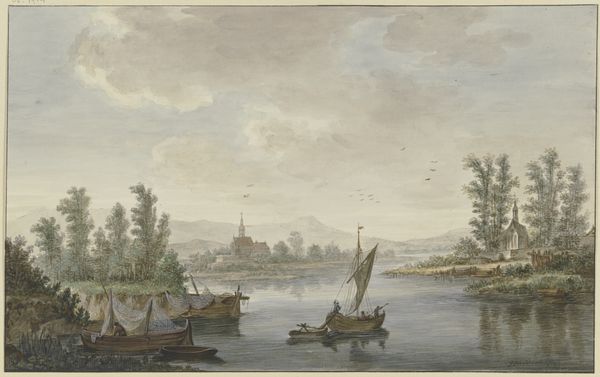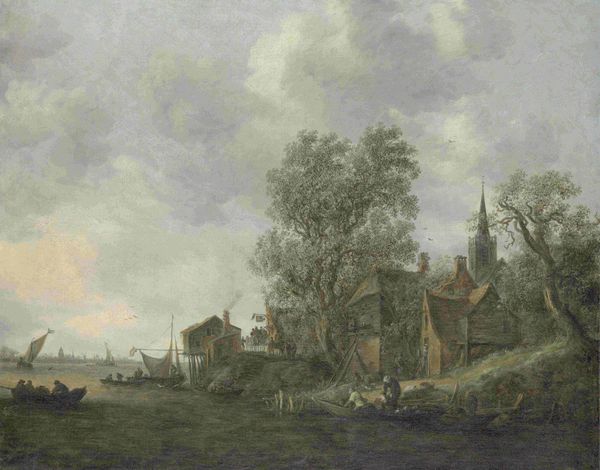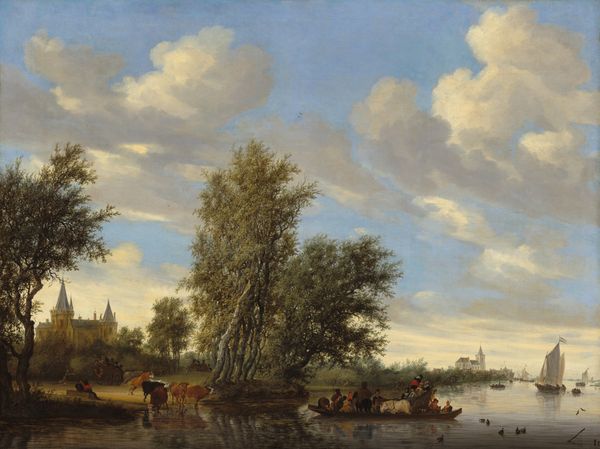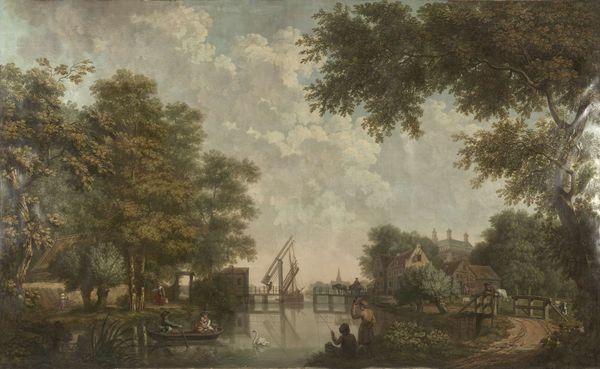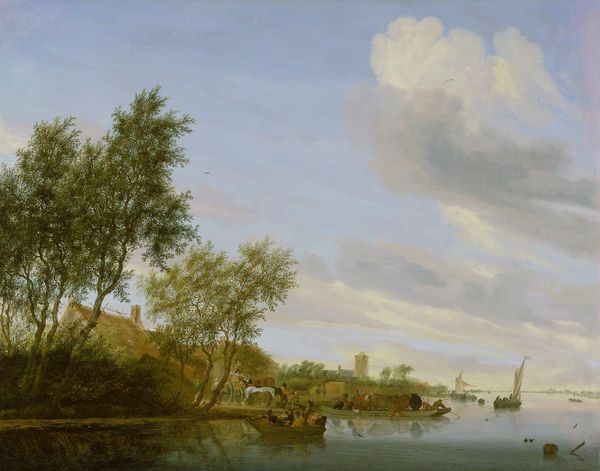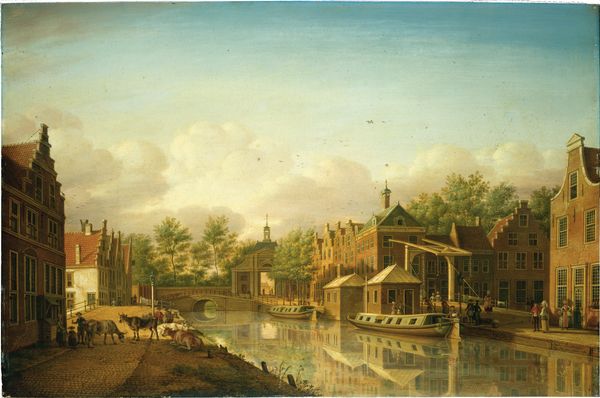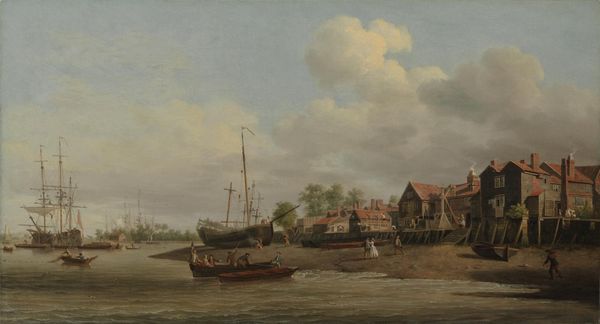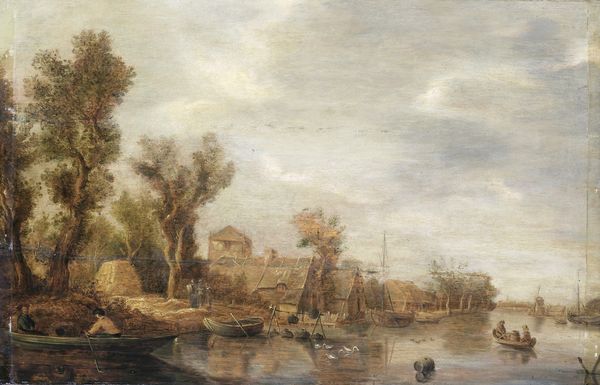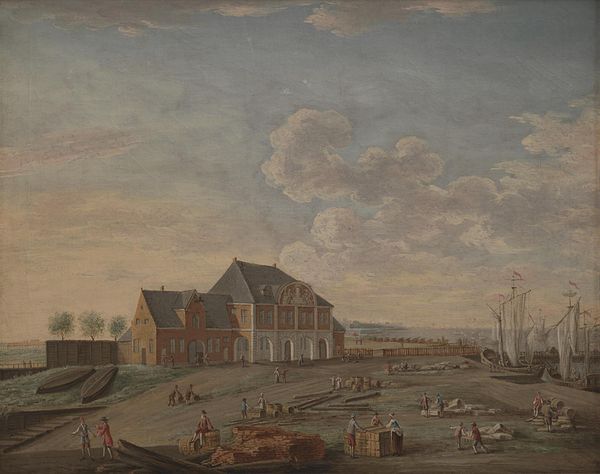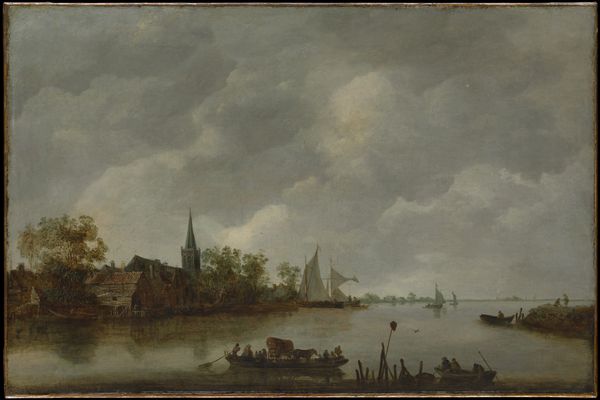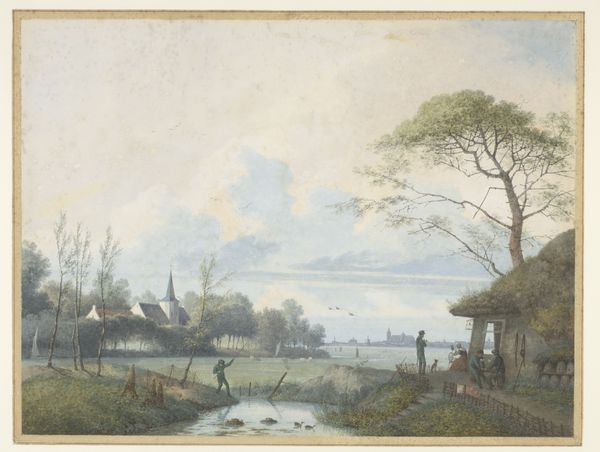
Landscape with Fishermen and Farmers Extracting Peat in a Marsh 1783
0:00
0:00
#
charcoal drawing
#
possibly oil pastel
#
oil painting
#
coloured pencil
#
underpainting
#
painting painterly
#
watercolour bleed
#
watercolour illustration
#
watercolor
#
warm toned green
Dimensions: height 28.4 cm, width 37.6 cm, depth 4.4 cm, weight 1 kg
Copyright: Rijks Museum: Open Domain
Curator: Welcome. We're looking at "Landscape with Fishermen and Farmers Extracting Peat in a Marsh," painted by Hendrik Willem Schweickhardt in 1783. It's currently held at the Rijksmuseum. What are your immediate thoughts? Editor: It's… surprisingly peaceful. Even though the subject is labour, there's a quietness to it, a sense of ordered life proceeding according to nature. Curator: Indeed. Schweickhardt's composition emphasizes balance. Note how the peat stacks mirror the clustered buildings on the left. Peat extraction, though vital for fuel, was also physically demanding. Seeing it here within what feels like an unaffected serene setting reveals a societal view on the labor itself. Editor: You're right, the symmetry gives it an almost classical harmony, contrasting with the harsh reality of their work. I'm also struck by how the symbols of work - boats, peat stacks, rudimentary lodgings – appear soft-edged, muted in color. As if the edges have been softened, the toil refined. Curator: Precisely. He idealizes the landscape but also provides valuable documentation of the landscape and work processes. We see figures engaged in peat extraction and fishing. The landscape becomes emblematic of the economic foundations upon which 18th-century Dutch society was built. The iconography is overt if you’re prepared to analyze what’s going on! Editor: And what about the light? It softens and diffuses the sharp edges of labour; everything bathed in this golden light; figures rendered smaller, integrated seamlessly into the surroundings. This light also contributes to the sense of nostalgia. It makes me wonder, was the aim here simply an objective representation, or did Schweickhardt intend a commentary on the changes occurring in Dutch society at that time? Curator: Schweickhardt was capturing a way of life which was probably disappearing. Editor: It makes one think about the intersection of environmental realities, class structures and survival depicted in these painterly gestures. Curator: Absolutely. Viewing it with our present day perspective offers additional dimensions, allowing reflections on shifting labour practices and their lasting influence on cultural memory. Editor: Indeed. Thank you; seeing through that lens brought forward new ideas about land, labour and historical documentation. Curator: My pleasure; these visual records teach enduring and multifaceted lessons.
Comments
rijksmuseum about 2 years ago
⋮
Here, peat –an important source of fuel –is being extracted from below the water table, a common technique in the west and north of the Netherlands. The man in the little boat dredges the peat from the water; it is then spread out on the ground. The woman in the distance stamps the peat drying in the sun into a hard mass. This is subsequently cut with a spade into easy-to-use blocks, which are then left to dry out fully.
Join the conversation
Join millions of artists and users on Artera today and experience the ultimate creative platform.
